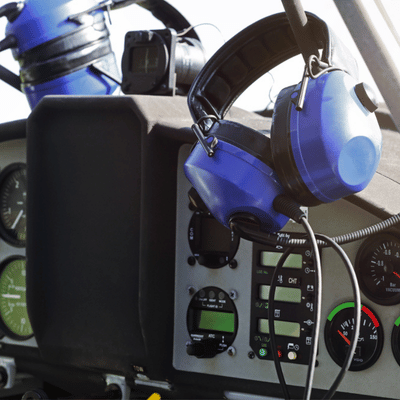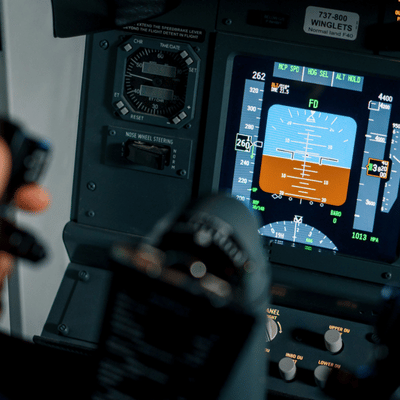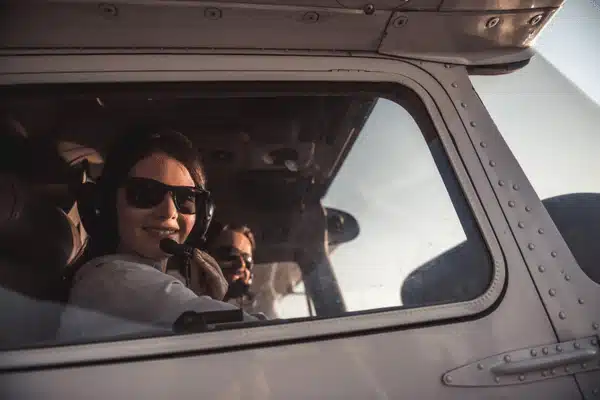Becoming a Certified Flight Instructor (CFI) is a rewarding path. You share your knowledge and build expertise while training new pilots. Flight instructors teach flying skills and judgment to keep our skies safe. The aviation industry needs qualified instructors more than ever. But what does a good CFI syllabus include? This guide covers CFI requirements, flight training syllabus structure, and flight instructor responsibilities.
Requirements to Become a Flight Instructor

The Federal Aviation Administration sets strict requirements for CFI candidates. You must be at least 18 years old and fluent in English. You need a commercial pilot or airline transport pilot license first. An instrument rating in your aircraft category is also required.
The path involves two FAA knowledge exams. One covers Fundamentals of Instructing (FOI). The other tests instructor knowledge areas including aerodynamics and regulations. You’ll also train in stall awareness and spin recovery procedures.
The final step is passing a CFI practical test. This checkride includes an oral exam and flight test. You’ll demonstrate both flying and teaching abilities. The test proves you can handle flight instructor regulations safely.
Flight instructor regulations don’t mandate specific flight hours beyond your commercial license. However, most candidates take a dedicated training course. Many programs operate under FAA Part 141 approval. These require at least 40 hours of ground training and 25 hours of flight training. Your actual training experience may vary based on your training level and skill.
The CFI Training Syllabus: Ground School and Flight Modules
CFI training covers ground training and flight training. A good course syllabus divides these into clear modules. Each stage has specific objectives and completion standards. This helps track your flight training progress systematically.
Ground School Syllabus
The ground school syllabus for CFIs is intense. You’ll master the Fundamentals of Instructing first. This covers the learning process and teaching methods. You’ll study how people learn and how to adapt to different styles. Understanding human factors in learning separates good instructors from great ones.
You must also master all commercial pilot knowledge areas. The ground school syllabus reviews meteorology, navigation, and aviation administration rules. You’ll learn flight instructor responsibilities like student endorsements and record keeping. Training materials include FAA handbooks and the Aviation Instructor’s Handbook.
Creating CFI lesson plans is a crucial skill. You’ll develop detailed lesson plans for different topics and maneuvers. Each plan needs a lesson content objective and completion standards. For example, a slow flight lesson plan includes what students should learn and how well they must perform. The FAA’s CFI Airman Certification Standards guide this process.
Many programs include instruction lab sessions. You might teach practice lessons to other trainees. These instruction labs build your confidence in explaining complex topics simply. You’re not just learning facts. You’re ensuring learner understanding through clear communication.
Flight Training Syllabus

The flying syllabus focuses on teaching from the right seat. You’ll revisit all private and commercial pilot maneuvers. The difference now is teaching them at instructor level.
Early flight lesson assignments cover preflight prep and post flight procedures. You practice teaching thorough inspections and proper debriefings. Basic maneuvers include steep turns, slow flight, and stalls. Each session emphasizes demonstration and teaching techniques.
Emergency operations training is vital. You practice simulated engine failures and emergency opns. The goal is teaching students to stay calm under pressure. Spin training is mandatory for airplane instructors. You’ll practice spin entry and recovery until you’re confident demonstrating them safely.
Cross country flights help you teach navigation and planning. You practice teaching radio procedures and airspace rules. Every flight builds your ability to spot and correct student errors. The flight training syllabus covers all scenarios students will eventually face.
Creating Effective CFI Lesson Plans
Creating Effective CFI Lesson Plans
A Step-by-Step Guide for Flight Instructors
- Be specific about the skill or knowledge to be mastered
- Align with FAA certification standards
- Make it measurable and achievable
- Explain the lesson’s purpose and relevance
- Connect to previous and future lessons
- Preview what will be covered
- Use a logical sequence from simple to complex
- Include both ground and flight components
- Add checkride lesson content where applicable
- Estimate ground instruction time
- Plan flight training duration
- Allow buffer time for questions
- Use FAA Airman Certification Standards
- Include altitude, heading, and airspeed tolerances
- Define acceptable error margins
Essential Lesson Plan Components
Your course outline includes developing comprehensive lesson plans. Each CFI lesson plan needs clear structure. Start with a flight objective that defines what students should accomplish. Include specific checkride lesson content that aligns with FAA standards.
Good lesson plans provide a learner overview at the start. This sets expectations and context. Break content into logical sections. Include flight hour breakdown references when relevant. Always specify completion standards so students know success criteria.
The syllabus plan should cover all required topics. Include knowledge areas like weather, regulations, and aircraft systems. Each lesson content objective must align with pilot training standards. Your flight instructor ground school syllabus should integrate seamlessly with flight lessons.
Flight Instructor Responsibilities
Earning your flight instructor certificate brings serious duties. You’re responsible for student safety during every lesson. You must maintain accurate records and provide proper endorsements. Student progress depends on your ability to assess readiness accurately.
Flight instruction requires evaluating when students are ready for solo flights. You provide student endorsements for key milestones. These include solo flights, cross countries, and checkrides. Each endorsement carries legal weight and responsibility.
You’ll also conduct flight reviews for certificated pilots. These biennial reviews evaluate pilot certificates and skills. Many instructors pursue CFII or MEI ratings to expand their capabilities. Some specialize in advanced training like night vision operations for pilot training programs.
Professionalism matters enormously. Students copy their instructor’s behavior and attitude. Show up prepared and on time. Stay calm under pressure. Maintain a continuous learning mindset. Every flight is a chance to refine your teaching methods.
The FAA no longer prints expiration dates on pilot certificates. However, you must renew every 24 months to stay current. This typically means taking a refresher course. Staying qualified is your responsibility as a professional instructor.
Why Become a Flight Instructor

Teaching pilots is incredibly rewarding work. You witness growth from first takeoff to checkride success. You play a direct role in aviation safety through proper training. Many say instructing is when they truly mastered flying concepts.
The industry demand creates excellent opportunities. Instructing is a common path to airline jobs. You can specialize in areas like instrument or multi engine training. Some instructors focus on advanced programs like night vision goggle operations.
Your training experience shapes future pilots. Every lesson impacts how they handle emergencies and make decisions. You’re not just teaching stick and rudder skills. You’re building judgment and safety culture.
Ready to start your journey as a flight instructor? Invest in quality training from day one. Choose a program with a proven syllabus plan and experienced mentors. Build strong CFI lesson plans and practice your teaching skills relentlessly. The aviation community needs dedicated instructors who take this responsibility seriously. Take the first step today and discover why flight instruction is one of aviation’s most fulfilling careers.
Frequently Asked Questions
What is included in a typical CFI syllabus?
A CFI syllabus includes both ground training and flight instruction modules. Ground school covers teaching methods, knowledge areas, and lesson planning. The flight training portion focuses on demonstrating maneuvers from the right seat and developing instruction techniques.
How long does it take to complete CFI training?
Part 141 programs require at least 40 hours of ground school and 25 hours of flight instruction. Your actual time depends on your proficiency and preparation. Most candidates complete training in 2-3 months with consistent effort.
Do I need a minimum number of flight hours to become a CFI?
No specific flight hour minimum exists beyond your commercial pilot license requirements. However, you must demonstrate teaching competency during your checkride. Most successful candidates have strong commercial pilot skills before starting CFI training.
What are the main responsibilities after earning my flight instructor certificate?
You’re responsible for student safety, accurate record keeping, and proper student endorsements. You’ll teach ground school, conduct flight lessons, and evaluate student readiness for solos and checkrides. You must also maintain your own currency through biennial renewals and continuous learning.

